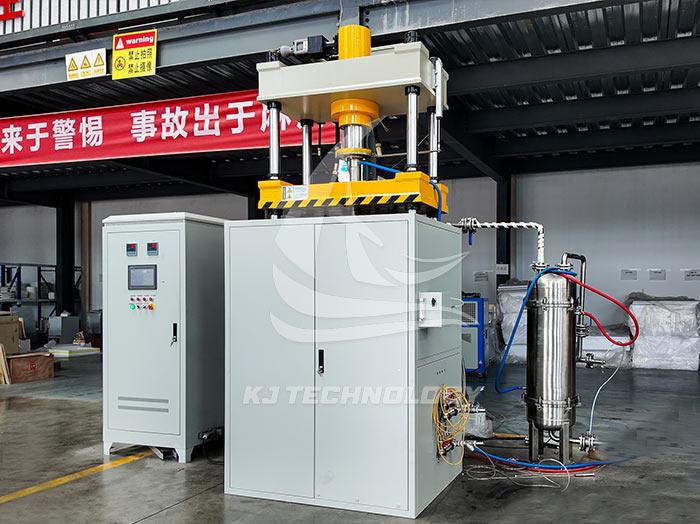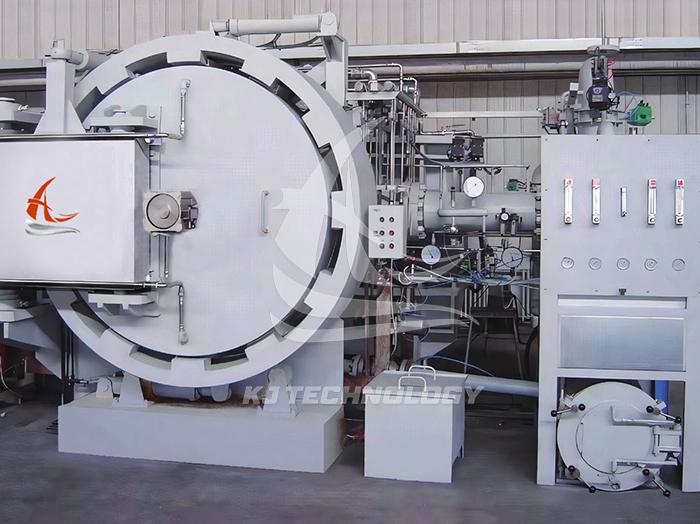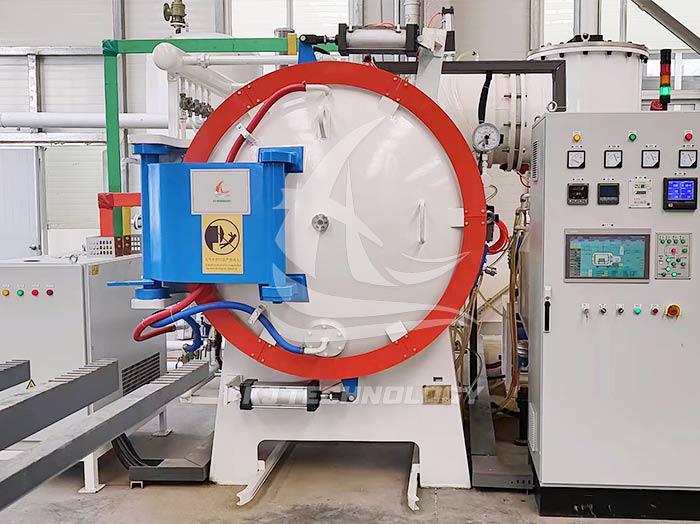Metal material sintering vacuum furnace
 06-20-2025 Author: KJ technology
06-20-2025 Author: KJ technology
Metal material sintering vacuum furnace is a device used for sintering metal materials in a vacuum or protective atmosphere environment. It is widely used in powder metallurgy, hard alloys, aerospace and other fields. The following introduces the working principle, structural composition, operation process, precautions and other aspects:
Working principle
Protective sintering of heated metal materials in a vacuum environment to prevent oxidation, decarburization, and other processes. There are various heating methods, such as resistance heating, induction heating, microwave heating, etc. For example, a vacuum induction sintering furnace utilizes the principle of intermediate frequency induction heating to generate high temperatures in the crucible inside the coil, which are then transmitted to the metal material through thermal radiation to achieve sintering.
Structural composition
Electric furnace body: It is the main place for sintering process, providing a high temperature environment for metal materials.
Vacuum system: composed of vacuum pump, vacuum gauge, vacuum pipeline, etc., used to extract air from the furnace to achieve the required vacuum degree.
Water cooling system: cools the intermediate frequency power supply, vacuum furnace induction coil, furnace body, etc. to prevent equipment damage due to overheating.
Pneumatic system: used to control the opening and closing of furnace doors, the entry and exit of materials, and other actions.
Hydraulic system: In some vacuum furnaces, it is used to provide pressurization function to make metal materials denser during sintering process.
Feeding and discharging mechanism: realizing automatic feeding and discharging of metal materials to improve production efficiency.
Base and workbench: support the entire equipment and provide a platform for operation.
Induction heating device: including tungsten heating element and advanced thermal insulation material, used to generate high temperature.
Power supply device: Provides power to the heating device.
Intermediate frequency power supply and electrical control system: Control heating power, temperature, vacuum degree and other parameters to achieve automated control of the sintering process.
Operation process
Check equipment status: Check all components of the equipment to ensure they are in good condition, paying special attention to the working status of the vacuum pump, heating element, and temperature control system.
Cleaning the furnace: Ensure that there are no impurities or dust inside the furnace, and avoid producing harmful gases or affecting the sintering quality of materials at high temperatures. You can use lint free cloth and anhydrous ethanol for cleaning.
Material pretreatment: Before being placed in the equipment, metal materials are cleaned, dried, and pre burned to ensure that the surface of the material is free of oil, moisture, and other impurities.
Loading: evenly distribute the materials in the furnace, avoid stacking them together, to ensure uniform heating of the materials and improve sintering quality. Select appropriate material loading capacity based on equipment specifications and experimental requirements.
Vacuum pumping: Start the vacuum pump and gradually reduce the air pressure inside the furnace to avoid material splashing or equipment damage caused by sudden pressure reduction, and achieve the specified vacuum degree.
Set parameters: Based on the characteristics of the material and experimental requirements, set appropriate vacuum degree, sintering temperature, heating rate, and holding time.
Start heating: Start the heating device and perform heating, insulation, and cooling operations according to the set parameters.
Monitoring process: During the entire sintering process, monitor the temperature and vacuum degree inside the furnace in real time to ensure that they are within the set range. If there are any abnormalities, the experiment should be adjusted or stopped in a timely manner.
Cooling discharge: After sintering is completed, gradually reduce the temperature inside the furnace to avoid material cracking or deformation caused by sudden cooling. Nitrogen or other inert gases can be used for protective cooling. After the equipment cools down, take out the sintered metal material.
Precautions
Sealing inspection: The sealing of the vacuum sintering furnace directly affects the vacuum degree and sintering effect. Check all sealing rings and valves to ensure good sealing and no air leakage.
Safety protection: When operating equipment, be sure to wear appropriate protective gear such as goggles, lab coats, and gloves. High temperature and vacuum environments may pose certain safety hazards.
Adhere to operating procedures: strictly follow the equipment's operating manual to avoid changing parameters or performing non-standard operations at will. Especially during the heating and cooling process, it should be done slowly to avoid sudden changes.
Emergency response: Familiarize oneself with emergency response measures for equipment, such as how to deal with sudden power outages, vacuum pump failures, and other situations.








